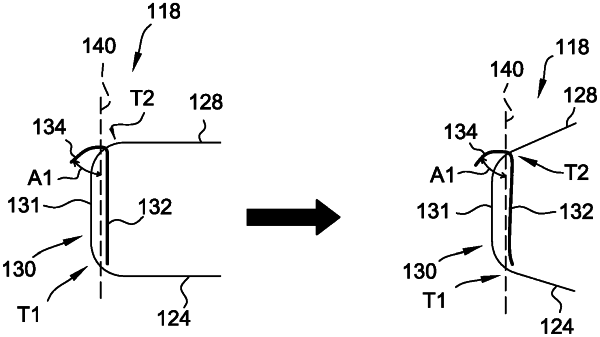| CPC A61B 17/0057 (2013.01) [A61B 2017/00526 (2013.01); A61B 2017/00592 (2013.01); A61B 2017/00623 (2013.01); A61B 2017/00646 (2013.01); A61B 2017/00867 (2013.01)] | 16 Claims |

|
1. A medical device for treating a target site, the medical device comprising:
a proximal end comprising a disc;
a distal end comprising a lobe, wherein the lobe comprises a proximal portion defining a proximal surface of the lobe, a distal portion defining a distal surface of the lobe, and a middle portion connecting and extending between the proximal portion and the distal portion, wherein a first transition between the proximal portion and the middle portion is curved and a second transition between the middle portion and the distal portion is curved, at least one of the first transition and the second transition having a radius of curvature between 0.001 and 0.150 inches, wherein the lobe has an expanded configuration when deployed at the target site and a reduced configuration for delivery to the target site;
a connecting member extending between and connecting the disc and the lobe, wherein the proximal surface of the lobe is continuous with the connecting member; and
a plurality of stabilizing wires coupled to the lobe at a radially outer surface of the middle portion, each stabilizing wire comprising a hook portion that extends radially outward from the lobe in the expanded configuration and the reduced configuration,
wherein, due to the first and second transition being curved, the middle portion of the lobe resists concave flexion when the lobe is radially compressed at a target site and maintains a radial extension angle of the hooks of the plurality of stabilizing wires during the radial compression.
|